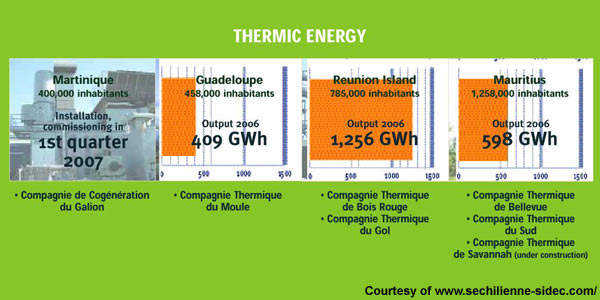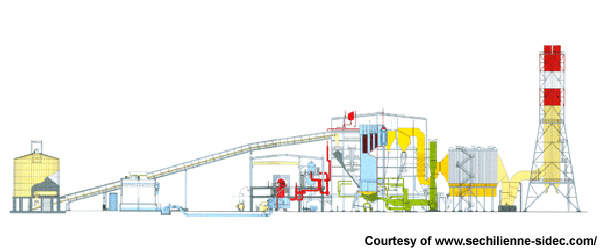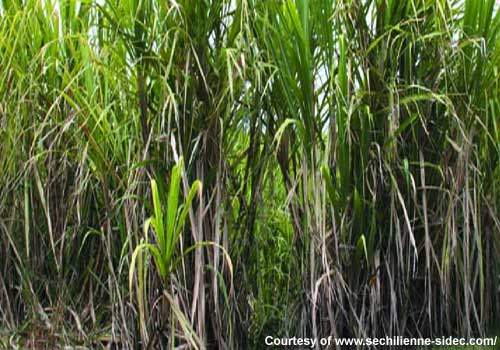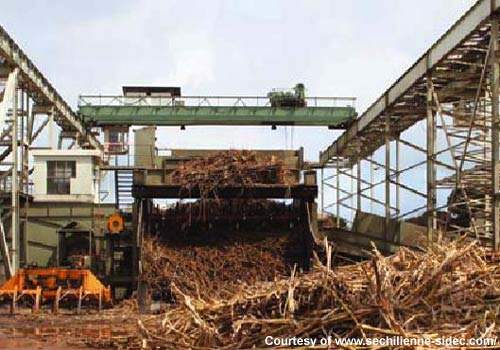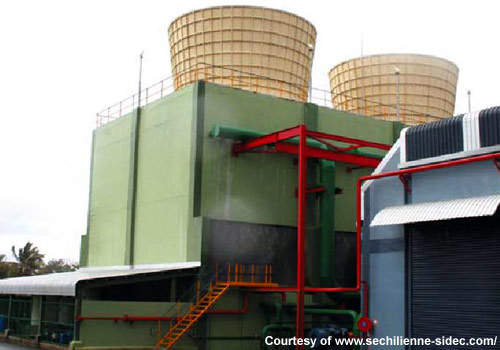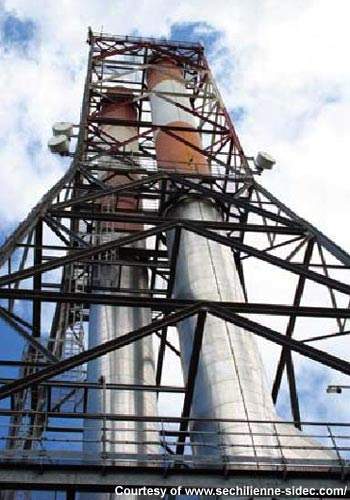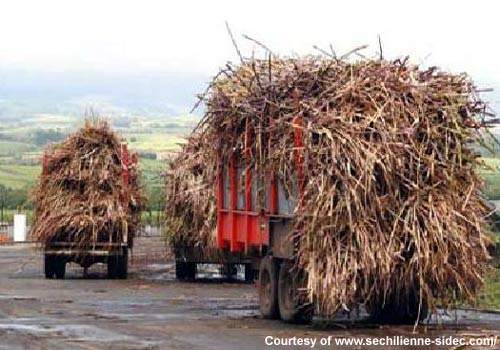A new 35MW coal and bagasse combined heat and power (CHP) plant has been added to the list in Mauritius. The CTDS (Compagnie Thermique du Sud) plant started operation in 2005, and was Mauritius’ second to use limited recourse project financing. The Combined Heat & Power plant was built and is being operated by CTDS. The plant is thought to have cost around US $50m.
The plant is another success for the Mauritian government’s far-sighted bagasse energy programme, and generally applicable in countries where sugar cane is an important crop. Mauritius and some other African countries are encouraging improved energy efficiency measures in sugar processing plants to minimise the co-generated energy (steam and electricity) used to process the cane, and export excess electricity to the grid. That injects power into the grid locally, often just where there is demand. It avoids the costs and losses of transmission lines, and can help postpone upgrading transmission networks themselves. If the coal could be replaced (for example) by charcoal the process would be carbon neutral, and reduce fossil fuel imports even further.
Power purchase agreements
The project was tendered by the CEB (Central Electricity Board) in January 2003, which has power purchase agreements (PPAs) with three take-or-pay IPP plants and two-part tariff IPP plants. In May 2003, CEB chose CTDS as the power supplier for PPA negotiations. The PPA, which was guaranteed by the government, was finally signed in Oct 2005.
CTDS is a consortium of Cie Energie Sud Ltée (65%), Séchilienne-SIDEC (25%), and the Sugar Investment Trust (15%). Mauritius Commercial Bank Ltd, Barclays Bank and Freehills were the lenders. Legal consultants were De Comarmond & Koenig.
The boiler was supplier by Stein. The Turbine/Generator was supplied by Thermodyn, Jeumont. Sotramon Ltee was EPC. Water treatment system was from VWS Envig.
Another request for proposals was issued in December 2003 for 60MW to 70MW of new capacity fired by bagasse and a complementary fuel. Compagnie Thermique de Savannal Limitée (CTSav) was the preferred bidder. Negotiations were held in the second half of 2004 and the power purchase Agreement was eventually signed with CTSav in February 2005. The company offered 65.5MW (during crop) and 74MW (intercrop).
Successful bagasse projects in Mauritius
Mauritius has a population of just over a million. Its major economic activities are agriculture, commerce, financial services, construction, textile manufacture and tourism. Energy sources are principally hydro, bagasse, solar, and imported petroleum and coal (it has no fossil fuel reserves). Installed capacity is around 500MW. At 10MW, hydro power has been fully exploited, and the country has been trying to increase the production from bagasse.
The Mauritius cane sugar industry is an important foreign exchange earner. Cane production there is over 5 million tons per year, 35% by nearly 30,000 small growers. Around 600,000 tons of sugar are recovered. Conventionally, 50% of the dry matter is harvested as cane stalk to recover the sugar with the fibrous fraction (bagasse) being burned to power the process. Most factories in Mauritius have been upgraded and now export electricity to the grid during crop season, with some using coal to extend production during the intercrop season.
This 725GWh of electricity (including 318GWh from bagasse) is around 40% of the country’s total. All the power plants are privately owned, and the programme has been a landmark to show how all the stakeholders (government, corporate and small planters) can co-operate. The approach is being recommended to other sugar cane producing countries in Africa – with 90 million tons of cane production a year, that gives a potential for around 10,000GWh.
Lessons for future bagasse projects
The main lessons learnt from the Mauritius bagasse programme have been the need for strong links between sugar industry and power sector, and to consider baseload power generation from the plants. The government’s strong support has been essential, with all the stakeholders participating fully in the whole process and sharing information transparently. The World Bank has been credited with a key role.
The programme has further shown that detailed feasibility studies are essential, including a reliable cost estimate during intercrop. Where private entrepreneurs are involved, an agreement is needed on a financing plan to avoid delays in implementing the projects. Initially, Mauritian plants were to use their own bagasse and that from a cluster of sugar factories. That idea was replaced by one with centralised milling in the most efficient CHP plants.

